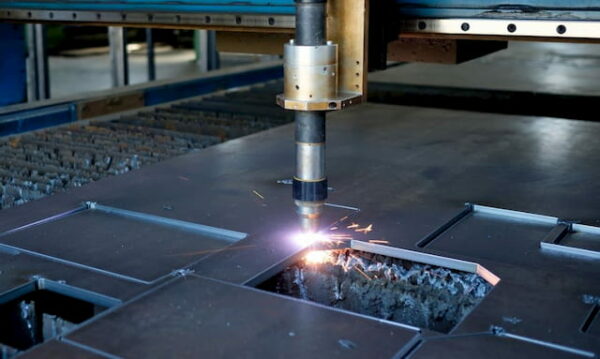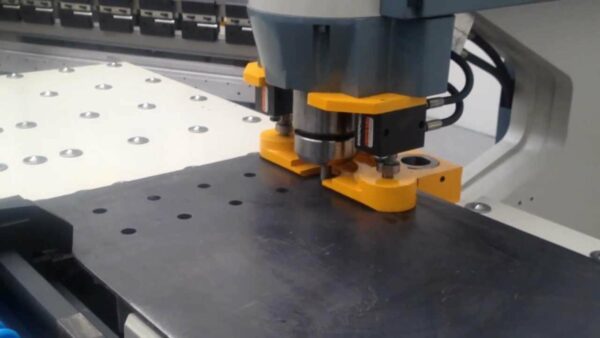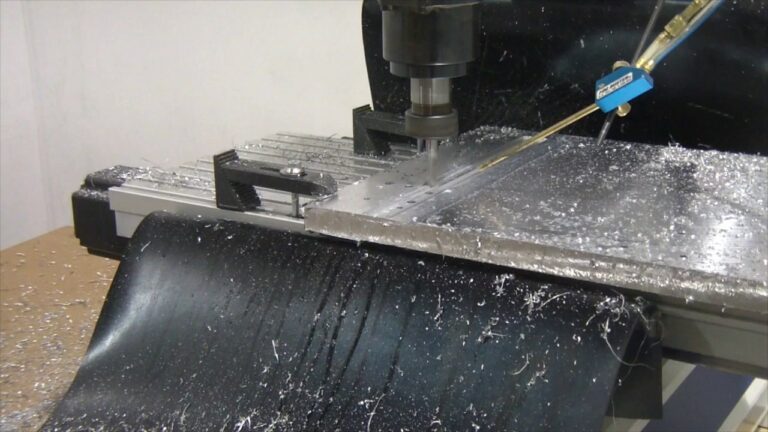+86-755-36841667 sales@usbtop.com
Each fabrication process typically starts with sheet metal cutting. For every metal cut and discarded, you’ll see the product taking shape little by little. There are several ways to cut metal depending on the thickness and project specification.
1. Laser Cutting;
2. Punching;
3. Bending;
4. Machining;
5. Welding;
1-1. Laser Cutting
Laser cutting is a thermal cutting process that uses a computer-directed high-powered laser together with an active gain mechanism (either gas or optical fiber) to concentrate the laser. Fiber laser cutting is typically the premier choice for metal fabrication applications.
Although laser cutting was developed in 1960s, industrial laser cutting become the metal fabrication norm in the late 1990s by professional metal fabricators.
There are currently two methods of laser cutting machines — CO2 laser cutters and fiber laser cutters. Both use a laser to create a beam used to cut metal, but fiber laser us optical fiber to concentrate the beam whereas the CO2 lasers use gas.
Each type of laser does have its strengths and distinct use cases, CO2 is an older technology and fiber lasers are gaining market fast as the technology advances. With the speed benefits, almost half of the operating costs and three to four times greater throughput than CO2 lasers, fiber lasers offer greater opportunities in terms of financial gain.
Laser Cutting provides designers with the ability to let their imagination run wild without worrying about the upfront costs of custom punch and stamp tools. Laser Cutting is a cost effective metal cutting process that can be used in rapid prototyping through to mass production of mild Steel, stainless steel, aluminium, copper and brass.

1-2. Plasma Cutting
Plasma Cutting is a sheet metal cutting technique which can cut through any conductive metal. This includes metals like steel, aluminium, brass, titanium and copper – either thick or thin.
Plasma cutting works by passing a hot plasma through conductive metals to cut through it. To make the plasma, an electric arc is passed through a gas such as nitrogen or oxygen. This creates a fourth state of matter called plasma. The plasma can then be forced through a small opening like a nozzle, which can then cut through conductive metal.
Plasma Cutter cut performance is quoted for mild steel. Stainless Steel and Aluminium require more power, so generally, cut performance will be less for these materials.
Although plasma cutting offers low investment and operating costs, the cutting quality is not as precise as laser cutting machines. Therefore plasma cutting is a more preferable means of cutting for thick sheet metals and high tolerance applications.

Shearing is a metal fabrication process that’s used to trim and remove unwanted material from sheet metal. It involves the use of a machine or tool, such as a bench shear, to slice through sheet metal with extreme precision. Shearing doesn’t require the use of heat — sheet metal is typically sheared while cold or at room temperature — nor does it produce waste in the form of chips, making it an attractive choice for manufacturers. Shearing is a fast cutting method, performed in seconds and offers smooth edges. It is cost-effective for high-volume manufacturing applications. However, the shear length is limited to the capacity of the shear machine. Also shearing does not allow non-linear cutting.
2. Punching
Sheet metal punching is a cutting process in which material is removed from a piece of sheet metal by applying a shearing force. CNC Punching can be used to produce holes and special cut-outs of various dimension and shapes. The most common punched holes are frequently used geometric shapes such as circle, square, rectangle, etc.
The die, located underneath the sheet, has a cut-out in the shape of the desired feature. Punches and dies of standard shapes are typically used, but custom tooling can be made for punching complex shapes. The punch press drives the punch downward at high speed through the sheet and into the die below. There is a small clearance between the edge of the punch and the die, causing the material to quickly bend and fracture.
This process can be performed on a manual punch press, but today CNC Punch presses are most common for quick and automated production.

3. Bending
Metal bending is a process by which metal can be deformed when applying force to the subject, which causes it to bend at an angle and form the anticipated shape.
4. Machining
Machining is a process in which a metal is cut to a desired final shape and size by a controlled material-removal process. Three principal machining processes are categorized as turning, drilling and milling. Other operations classified under miscellaneous categories are shaping, planing, boring, broaching and sawing.

5. Welding
Welding is a fabrication process whereby two or more metal parts are fused together by means of heat forming a join as the parts cool.
Painting plays an important role in finishing metal parts, products, and components.
Metal coating processes are applied to prevent specific environmental degradation and ensure metal parts and products last.
We chat
